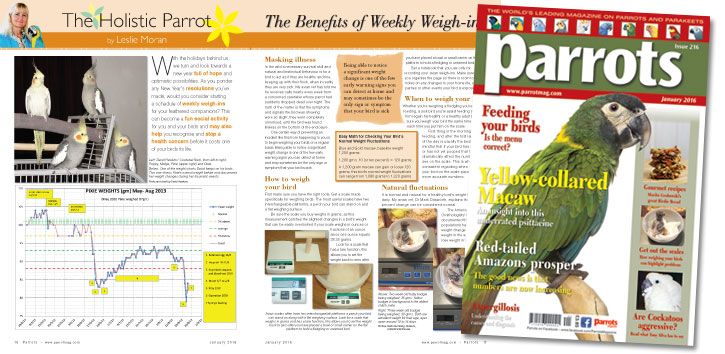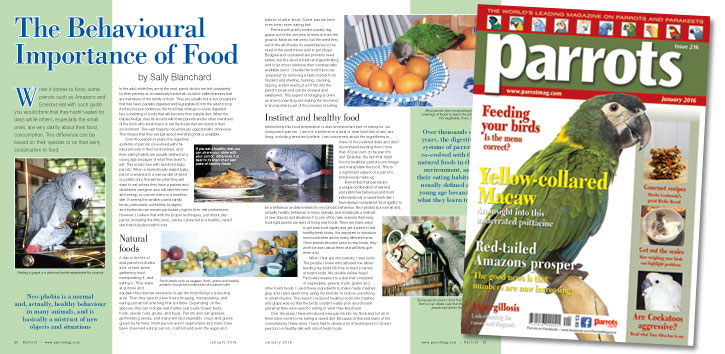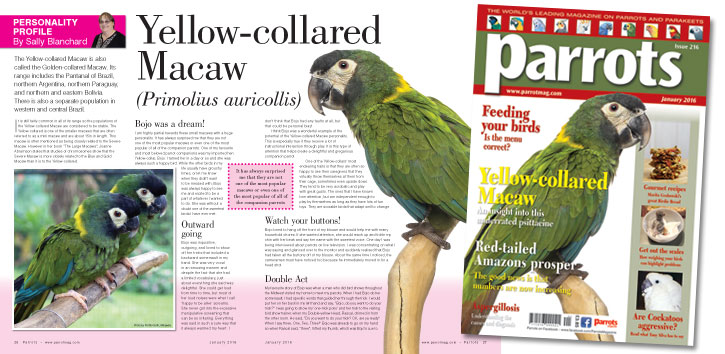The Benefits of Weekly Weigh-ins

The Holistic Parrot by Leslie Moran
With the holidays behind us, we turn and look towards a new year full of hope and optimistic possibilities. As you ponder any New Year’s resolutions you’ve made, would you consider starting a schedule of weekly weigh-ins for your feathered companions? This can become a fun social activity for you and your birds and may also help you recognise and stop a health concern before it costs one of your birds its life.
In the wild a necessary survival skill and natural and instinctual behaviour is for a bird to act as if they are healthy and fine, keeping up with their flock, when in reality they are very sick. My avian vet has told me he receives calls nearly every week from a concerned caretaker whose parrot had suddenly dropped dead over night. The truth of the matter is that the symptoms and signals the bird was showing were so slight, they went completely unnoticed, until the bird was found lifeless on the bottom of the enclosure.
Buy Now!



